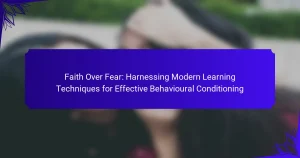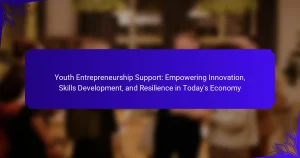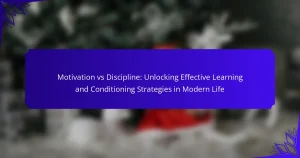Effective learning strategies are essential for achieving modern success in education and personal development. This article explores key principles like active engagement and feedback, innovative conditioning techniques such as spaced repetition and gamification, and rare but effective methods like experiential learning. By adapting study habits to individual needs and employing structured techniques, learners can enhance retention and understanding, ultimately fostering a more productive learning environment.
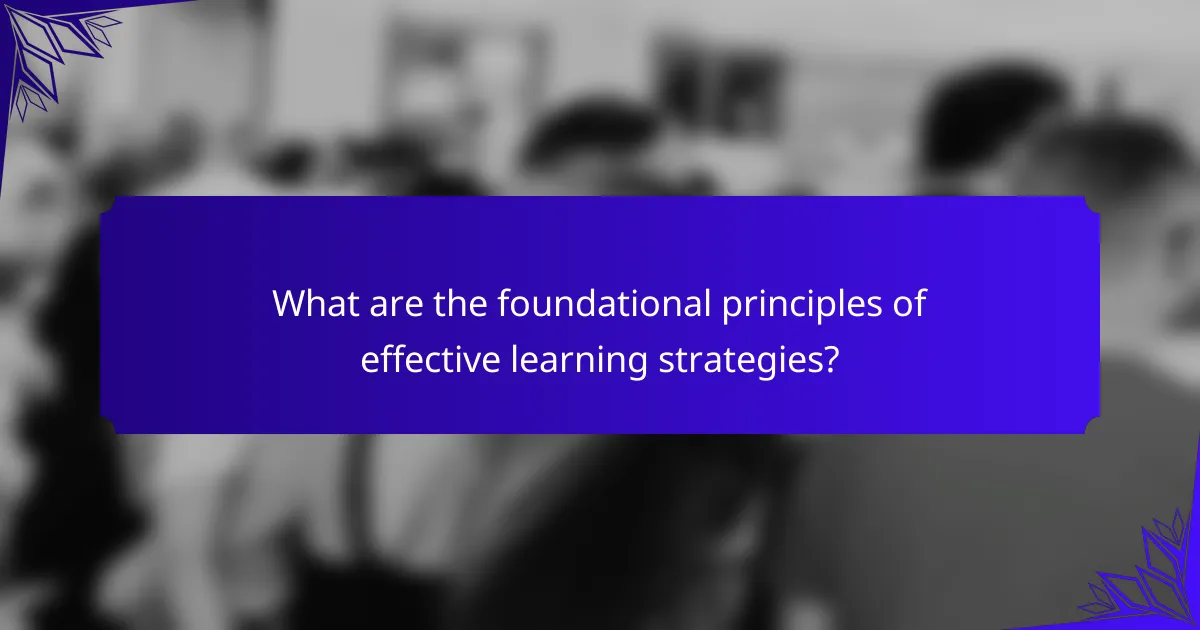
What are the foundational principles of effective learning strategies?
Effective learning strategies are grounded in principles such as active engagement, feedback, and adaptability. These foundational elements enhance retention and application of knowledge. Active engagement promotes deeper understanding through participation. Feedback provides critical insights for improvement, while adaptability allows learners to adjust strategies based on their progress. Emphasizing these principles fosters effective learning environments and supports sustained success.
How does the brain process and retain information?
The brain processes and retains information through encoding, storage, and retrieval. Effective learning strategies, such as spaced repetition and active engagement, enhance retention. Conditioning techniques, like associative learning, strengthen memory connections. These methods leverage the brain’s natural plasticity, allowing for improved information retention and recall.
What role does motivation play in learning?
Motivation significantly enhances learning by driving engagement and persistence. It influences how students approach challenges and persist in overcoming obstacles. Intrinsic motivation, such as personal interest, fosters deeper understanding and retention. In contrast, extrinsic motivation, like rewards, can enhance performance but may not sustain long-term engagement. Understanding the role of motivation allows educators to tailor strategies that optimize learning outcomes.
What techniques enhance intrinsic motivation?
To enhance intrinsic motivation, techniques such as goal setting, self-reflection, and fostering a growth mindset are effective. Goal setting provides clear objectives, while self-reflection encourages personal insights. A growth mindset promotes resilience and adaptability, essential for sustained motivation. Additionally, autonomy in learning processes boosts engagement and satisfaction.
How can extrinsic rewards be effectively utilized?
Extrinsic rewards can be effectively utilized by aligning them with intrinsic motivations. This approach enhances engagement and reinforces desired behaviors. Establish clear criteria for reward attainment, ensuring they are meaningful and attainable. Regularly assess the impact of rewards on performance and motivation. Adjust strategies based on feedback to maintain effectiveness.
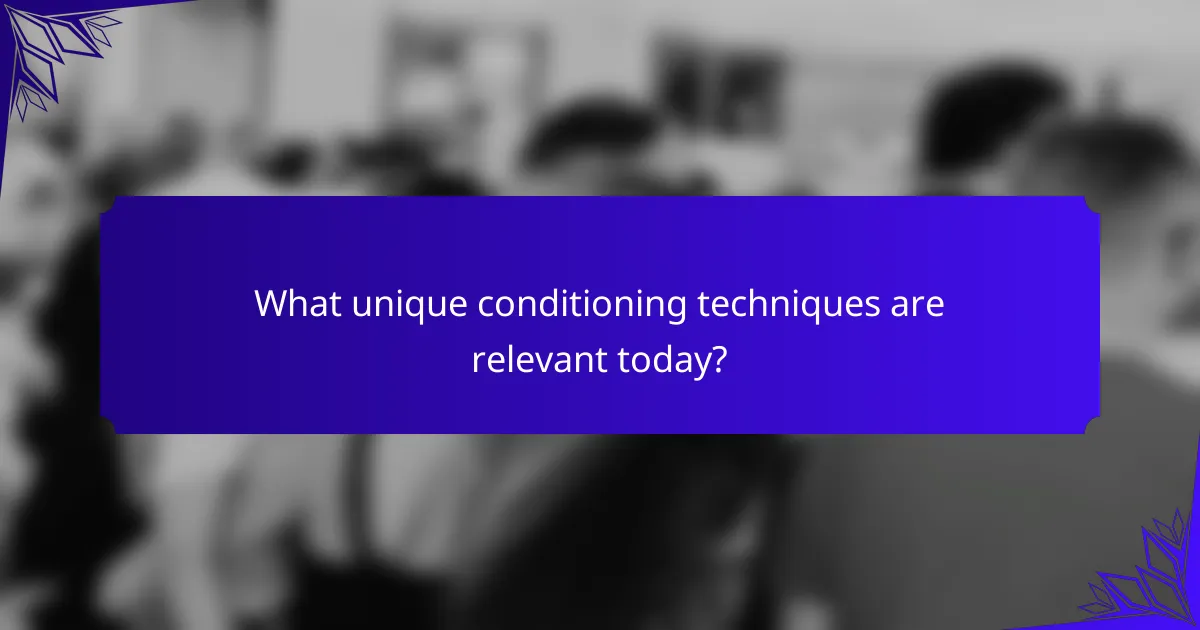
What unique conditioning techniques are relevant today?
Modern conditioning techniques emphasize adaptability, engagement, and neuroscience-based methods. Techniques like spaced repetition enhance retention, while gamification increases motivation. Mindfulness practices support emotional regulation, fostering a conducive learning environment. Collaborative learning encourages peer interaction, enriching the educational experience. Each technique aligns with the unique needs of today’s learners, promoting effective and meaningful outcomes.
How does technology influence modern learning?
Technology significantly enhances modern learning by providing diverse tools and resources. It facilitates personalized education, allowing learners to progress at their own pace. Online platforms offer access to a wealth of information, promoting self-directed learning. Interactive applications and virtual simulations engage students, improving retention and understanding. Additionally, technology fosters collaboration through communication tools, enabling group projects and discussions regardless of location. The integration of artificial intelligence in educational software tailors learning experiences, addressing individual strengths and weaknesses. Overall, technology transforms traditional learning into a more dynamic and effective process.
What are the benefits of gamification in education?
Gamification in education enhances engagement, motivation, and retention of knowledge. It transforms learning into an interactive experience, fostering a sense of achievement through rewards and challenges. This approach can lead to improved academic performance and increased participation among students. Gamification also promotes collaboration and critical thinking skills, essential for modern success. By integrating game elements, educators can create a more dynamic and effective learning environment.
How can online platforms enhance learning outcomes?
Online platforms can significantly enhance learning outcomes through interactive tools, personalized content, and data analytics. These features promote engagement, adaptability, and informed decision-making.
Interactive tools, such as quizzes and simulations, allow learners to apply concepts in real-time, reinforcing knowledge retention. Personalized content tailors learning experiences to individual needs, addressing unique attributes like learning pace and style. Data analytics provide insights into learner progress, enabling timely interventions to improve outcomes.
Incorporating these strategies leads to a more effective learning environment, fostering success in modern education.
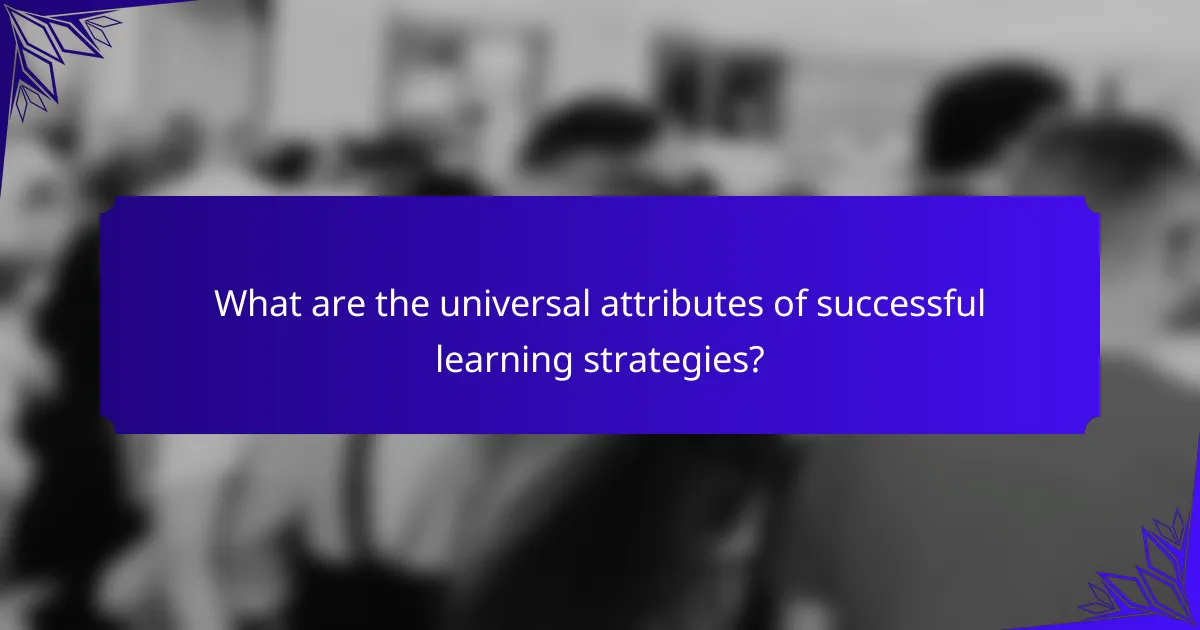
What are the universal attributes of successful learning strategies?
Successful learning strategies share universal attributes that enhance retention and understanding. Key attributes include adaptability, engagement, and feedback. Adaptability allows learners to modify their approaches based on effectiveness. Engagement fosters motivation and interest, while feedback provides essential insights for improvement. These attributes collectively create a robust framework for effective learning.
What common methods are used in effective learning?
Effective learning commonly employs methods such as active engagement, spaced repetition, and multimodal approaches. Active engagement enhances retention through participation. Spaced repetition improves memory by revisiting material over time. Multimodal approaches cater to different learning styles, combining visual, auditory, and kinesthetic methods for better understanding.
How does spaced repetition improve retention?
Spaced repetition significantly enhances retention by optimizing the timing of review sessions. This technique leverages the spacing effect, which suggests that information is more easily recalled when study sessions are distributed over time. Research indicates that spaced repetition can improve long-term retention by up to 50% compared to massed practice. By strategically increasing intervals between reviews, learners reinforce memory pathways, making recall more efficient. This method aligns with cognitive science principles, maximizing learning effectiveness and retention duration.
What is the significance of active learning?
Active learning is significant because it enhances engagement and retention through participation. This approach fosters critical thinking and problem-solving skills. Studies show that students involved in active learning outperform peers in traditional settings. The unique attribute of active learning is its adaptability, allowing various techniques like collaborative projects and interactive discussions. As a result, it prepares learners for real-world challenges effectively.
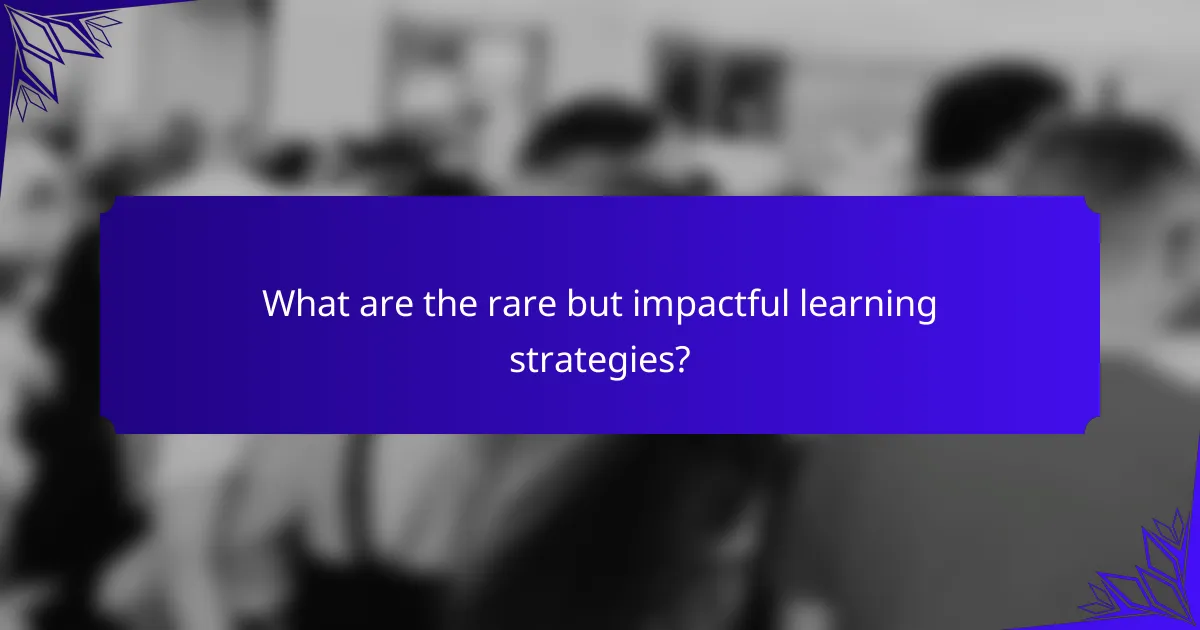
What are the rare but impactful learning strategies?
Rare but impactful learning strategies include experiential learning, spaced repetition, and interleaved practice. These methods enhance retention and understanding by engaging learners in unique ways. Experiential learning emphasizes real-world experiences, allowing learners to apply concepts practically. Spaced repetition involves revisiting material over increasing intervals, which strengthens memory retention. Interleaved practice mixes different subjects or skills during study sessions, promoting deeper cognitive processing. Implementing these strategies can lead to significant improvements in learning outcomes.
How can personalized learning plans be developed?
Personalized learning plans can be developed by assessing individual learning styles and needs. Start by identifying specific goals for each learner. Utilize assessments to gather data on strengths and weaknesses. Incorporate diverse resources tailored to preferences, such as visual aids or hands-on activities. Regularly review and adjust the plan based on progress and feedback.
What innovative techniques are emerging in 2025?
Innovative techniques emerging in 2025 focus on personalized learning and adaptive conditioning methods. These strategies utilize artificial intelligence to tailor educational experiences, enhancing engagement and retention. For instance, immersive virtual reality environments allow learners to practice skills in realistic scenarios, promoting deeper understanding. Additionally, gamification elements are integrated into learning platforms, making education more interactive and motivating. These advancements aim to create more effective learning pathways that cater to individual needs and preferences.
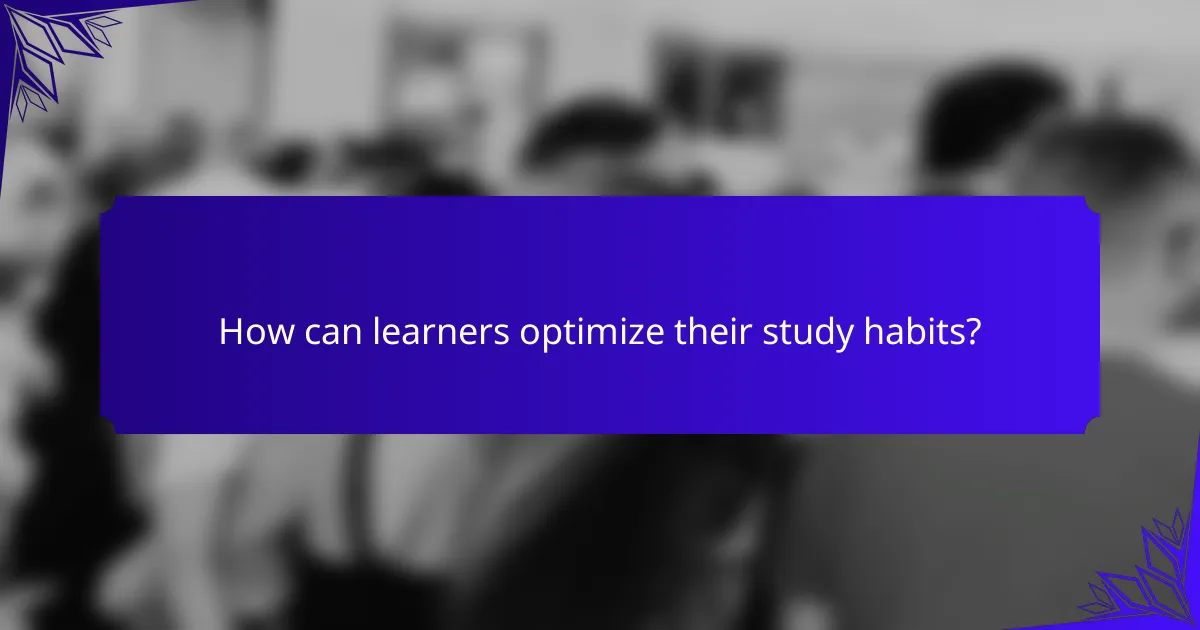
How can learners optimize their study habits?
Learners can optimize their study habits by employing effective strategies tailored to their individual needs. Techniques such as spaced repetition, active recall, and goal-setting enhance retention and understanding.
Spaced repetition involves reviewing material at increasing intervals, which improves long-term memory. Active recall encourages learners to retrieve information without prompts, reinforcing neural connections. Setting specific, measurable goals provides direction and motivation, fostering a focused study environment.
Incorporating these strategies can lead to improved academic performance and a deeper grasp of subjects. Adapting to personal learning styles further enriches the study experience, making it more engaging and effective.
What are the best practices for time management in learning?
Effective time management in learning involves prioritizing tasks, setting clear goals, and using techniques like the Pomodoro method. These practices enhance focus and retention. Break tasks into smaller, manageable segments to avoid overwhelm. Regularly review progress to adjust strategies as needed.
What common mistakes should be avoided in learning?
To enhance learning, avoid common mistakes such as lack of goal-setting, ineffective time management, and passive consumption of information. These pitfalls hinder progress and retention. Setting clear, achievable goals fosters motivation. Active engagement, like summarizing or teaching concepts, improves understanding. Prioritize consistent study schedules over cramming for better long-term retention.
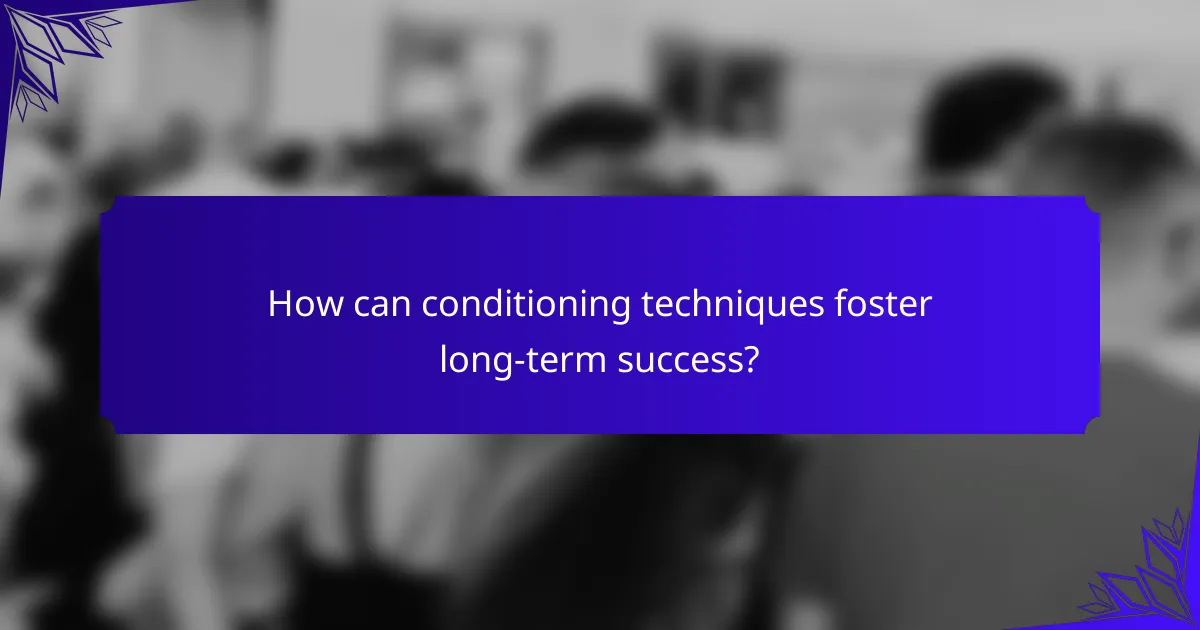
How can conditioning techniques foster long-term success?
Conditioning techniques can significantly enhance long-term success by establishing consistent habits and reinforcing positive behaviors. These techniques, such as positive reinforcement and habit stacking, create a structured approach to learning and personal development. As a result, individuals are more likely to internalize skills and achieve their goals over time. Research indicates that consistent application of these techniques leads to improved retention and mastery of complex concepts. By focusing on incremental progress and rewarding achievements, individuals can cultivate resilience and adaptability, essential traits for sustained success.
What is the role of habit formation in learning?
Habit formation plays a crucial role in learning by creating automatic responses to stimuli. Consistent practice reinforces neural pathways, enhancing retention and application of knowledge. Effective strategies involve setting clear goals, tracking progress, and rewarding achievements. Research shows that habits formed through repetition lead to greater success in learning environments, facilitating long-term skill acquisition.
How can mindfulness practices enhance learning effectiveness?
Mindfulness practices significantly enhance learning effectiveness by improving focus, reducing stress, and increasing retention. These practices cultivate a present-moment awareness that helps learners absorb information more deeply. Studies show that mindfulness can boost cognitive flexibility, allowing for better problem-solving and creativity. Additionally, regular mindfulness exercises can lead to improved emotional regulation, which supports a more conducive learning environment. Overall, integrating mindfulness into educational settings fosters a holistic approach to learning.

What expert insights can enhance your learning experience?
Effective learning strategies enhance your experience by fostering retention and engagement. Techniques like spaced repetition improve memory, while active learning encourages deeper understanding. Research shows that combining visual and auditory materials can boost information retention by up to 60%. Moreover, setting specific goals increases motivation and focus, leading to more productive study sessions.
What are the top tips from educational psychologists?
Effective learning strategies from educational psychologists emphasize active engagement, tailored feedback, and metacognitive practices. These techniques enhance retention and understanding. Incorporating spaced repetition, varied practice, and self-assessment are essential for modern success. Educational psychologists advocate for creating a supportive learning environment, fostering motivation, and encouraging collaboration among peers.
How can feedback loops improve learning outcomes?
Feedback loops enhance learning outcomes by promoting continuous improvement through timely responses. They allow learners to assess their progress, adjust strategies, and reinforce understanding. Effective feedback can be immediate, specific, and constructive, which fosters a growth mindset. Research indicates that incorporating feedback loops can increase retention rates by up to 30%. This technique is particularly valuable in adaptive learning environments where personalized learning paths are essential. By leveraging data from feedback, educators can tailor their approaches to meet individual learner needs, ultimately leading to improved academic performance.
